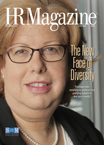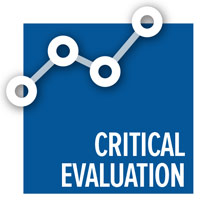'Big Data' Is Shaping Employers' Benefits Strategies
Sophisticated employers are using 'big data' to inform their choices about health care and retirement plans.

 Sarah Staggs is lucky to have lots of benefits statistics at her fingertips. As head of benefits at property and casualty insurer Zurich North America, she can easily access information on 8,500 employees in the U.S. and Canada.
Sarah Staggs is lucky to have lots of benefits statistics at her fingertips. As head of benefits at property and casualty insurer Zurich North America, she can easily access information on 8,500 employees in the U.S. and Canada.
On the health care front, this data includes her company’s yearly health savings account contributions; comparable figures from competitors; and biometric screening results, such as the number of employees who have high cholesterol or who are at risk for diabetes.
In the retirement arena, she can scan employee participation and deferral rates for defined contribution plans, track when workers start using them, and assess how employees manage their investments online.
But how can this data help with decision-making? Staggs wants to dig deeper. For example, which health conditions are likely to affect her workforce the most? Where can employees get top-level medical care at the best prices? Which workers are at risk for becoming seriously ill? “How can we identify them as a person in need?” she asks. “And how can we get them into early treatment?”
Staggs, and other HR professionals, might not have to wait long for answers. Employee benefits are entering the brave new world of “big data,” with the promise of significant advances in the design and delivery of benefits offerings, particularly in health care. As more medical information becomes available, computing power increases and players in the health system work together more closely, data-crunching is saving time, money and lives.
“We’re certainly further along than we were a few years ago,” says Shari Davidson, vice president of the Boston-based National Business Group on Health. But, she notes, “I think we still have a long way to go.”
HR’s role in collecting, analyzing and acting on benefits-related metrics is often limited in small and midsize organizations. That’s because much of the data comes from vendors that may provide information in different formats and because there are several laws and regulations—including the Health Insurance Portability and Accountabiity Act, the Genetic Information Nondiscrimination n Act, and the Affordable Care Act—that make it difficult for an employer to contact an employee directly about his or her health risks and suggest treatment. However, a health plan representative or a doctor can reach out to an employee to urge him or her to change medication or enroll in an employer’s wellness program, for example, or to advise a more serious health intervention.
In crunching the numbers that they have—and in partnering with health plan representatives, retirement plan sponsors, the C-suite and benefits consultants—HR professionals can play an integral role in managing benefits information, says Ted Makowiec, a vice president and health consultant with consulting firm Sibson. The best way to start is by urging health plan providers to offer better benefits data and analysis and to provide the information more quickly. Be prepared to change carriers if vendors are not responsive.
“Push your health plan to give you the answers you need,” Davidson advises.
Intelligent Intervention
Independence Blue Cross, a Philadelphia-based health insurance company, is trying to capitalize on the promise of benefits data analysis. The company has set an audacious goal of “scoring” more than 210,000 of its customers to predict who is likely to be hospitalized within the next three months.
To do this, benefits analysts have collected claims data, lab results and other routine health information and have mined databases to glean additional clues, such as who lives alone. (That’s relevant because those who reside solo are more likely to be readmitted to a hospital after a first visit.) The company has built and refined its algorithms and uses artificial intelligence to combine all the information.
Somesh Nigam, chief informatics officer at Independence, says the system is forecasting near-term hospitalizations with better than 70 percent accuracy. “Soon we’ll be above 80 percent,” he adds. “The algorithms can be almost spookily relevant.”
The insurer is now assigning staff members to work with the individuals identified through the algorithms and assist with their medications and appointments or arrange for a home care nurse. Among the conditions getting close attention are diabetes, congestive heart failure and chronic obstructive pulmonary disease.
“It costs $10,000 to $15,000 for a hospital visit,” Nigam says. “If we can prevent even a few, that’s a lot of money.”
How quickly someone receives treatment can make a big difference in determining patient outcomes. “In a perfect world, all the data is being put together as quickly as possible to identify where the clinician can intervene as quickly as possible,” Makowiec says.
Data analysis is improving health care on a macro scale as well, says Paul Fronstin, director of the health research and education program at the Employee Benefit Research Institute in Washington, D.C. For example, crunching data for large numbers of patients has provided evidence that, when cost-sharing is increased for patients with certain conditions—in other words, when consumers are forced to pay more for the medications and supplies they need—those individuals will cut back on such treatments to save money. The result: They wind up in hospitals more frequently, costing everyone—employers and consumers—more. Consequently, some health plans are providing medications and supplies free to certain patients with chronic conditions, such as diabetics.
At the regional level, some health plans and employers are looking closely at costs for specific procedures—such as knee and hip replacements—for which most hospitals provide similar quality at varying prices. If a procedure typically costs $30,000 in a region but some hospitals charge $60,000, the health plan will pay only $30,000. If the patient wants to go to a more expensive facility, he or she must pay the difference.
While advances in the use of data are encouraging, most small employers lack the resources to conduct sophisticated data analysis on their own. “Analytics and resources vary greatly based on the size of the employer,” Makowiec says. “For some organizations, HR collects just what their health plan provides. For others, it can be eligibility data, health reimbursement account data, absence data—everything they can get.” He notes that small employers lack an adequate sample size for some analyses, such as cancer prevalence, to be meaningful. Large employers, on the other hand, typically have a data warehouse or other infrastructure to collect, store and crunch numbers, as well as staff to mine the data.
6 Metrics Everyone Should TrackHere are six common metrics that organizations of all sizes can track to gain insight into benefits usage and costs. | |
Health Care Plans Top cost drivers. What employee health conditions or behaviors are the most expensive? The health plan provider and employer can implement voluntary programs for affected groups of employees, such as smoking-cessation programs. Participation rates. How many employees use wellness programs? HR can communicate about the value of underutilized programs and consider implementing different ones. Satisfaction. How do employees rate the health plan or wellness benefits? This analysis can lead to changes in plan design or even in the choice of a health plan vendor. | Retirement Plans Participation rate. How many workers use the 401(k) plan? This is particularly relevant regarding employees who are not enrolled automatically. Deferral rate. How much pay do employees set aside? This helps identify how many workers don’t take full advantage of the company match. Demographics. How do participation and deferral rates vary by gender, tenure and age? This can guide targeted communications for workforce segments and can lead to changes in plan design. |
Deciding which statistics to gather and study can be tricky. Numerous types of data relate to health care costs, for example, such as inpatient and outpatient expenses, participation in and effectiveness of wellness programs, cost of prescription drugs, patient utilization of medications, administrative expenses, and much more.
“It is that complicated,” Makowiec admits.
Other problems with using big data to guide benefits decisions include having inaccurate information and the fact that some data reflect past activity and cannot reliably forecast future events. However, there are some basic metrics that any HR professional can use to evaluate benefits programs. Experts advise HR to start with—and focus on—benefits metrics that are meaningful for their organization and that will drive change. “It really has to be actionable,” Davidson says.
Improving Outcomes
Using benefits analysis to effect change is the goal at KI Furniture, a contract furniture manufacturer based in Green Bay, Wis. Benefits Manager Jodi McWilliams pays close attention to metrics related to her company’s health savings accounts (HSAs), which cover most of the firm’s 2,000 employees. Every January, the company deposits its annual contributions into these individual accounts, which workers use to pay for health care throughout the year. Also once a year, HSA enrollees are asked to take a health risk assessment. This information is used to rank them by level of health problems.
In 2006, when McWilliams started at KI and HSAs became the primary health option there, the average employee health score was below 60 on a scale of 100. Scores have risen fairly steadily to the current average of 71.5. But it’s not enough improvement for the workforce as a whole; McWilliams wants to move more individuals out of high-risk categories, and the company’s health carrier continually monitors employees over time to assess how aging is affecting their blood pressure, cholesterol and so on.
Once a year, McWilliams sits down with the carrier to examine claims data and determine which areas they need to work on. The insurer can communicate both the number of people with certain conditions as well as whether certain subsets of employees, such as those in a specific role, are at particular risk. For example, “your salespeople might have primary doctors but they are the ones running to the ER,” McWilliams says. Once HR knows that information, it can encourage salespeople to take breaks during the day to go to the doctor so that they aren’t addressing health issues only at night, when their options are more limited and more expensive.
Like McWilliams, Staggs is always searching for ways HR can apply benefits information to save money and improve outcomes. “We’re looking at lots of data on what we spend and how we spend it,” Staggs says. “We’re benchmarking with other insurance companies and the financial industry.” For example, if her company’s health plan contributions slip behind those of key competitors or gaps are found in health coverage, the firm might boost contributions, tweak the plan design, or add a program to help with smoking cessation or weight loss. If the data indicate that employees aren’t recognizing the value of their benefits, HR might change its communications strategy.
Recently, an analysis of defined contribution retirement plan deferrals prompted Staggs’ team to enroll new employees in the plan automatically on their 45th day on the job, with a 6 percent deferral rate—equal to the company match. Now, the HR staff is trying to educate employees about how to create balanced portfolios.
Plan participation and deferral rates are the most common retirement statistics monitored by HR, notes Nevin Adams, chief of marketing and communications at the American Retirement Association. “I don’t think they’re bad metrics,” he says, “but when you get into the automatic enrollment world, the participation rate seems like a less significant metric.” To improve overall results, the industry has become more focused on outcomes: Are people putting sufficient funds into their retirement accounts? There are tools that can estimate how far employees are from retirement based on their current investment level.
Organizations should examine their retirement plans not just to help employees boost their retirement security, but also to support better workforce management, Adams says. Assessing the company’s demographics might reveal that many Baby Boomers are staying on the job longer than expected and blocking the advancement of younger workers. “The employer might have an interest in helping employees find a way into retirement,” Adams says.
Big Data and Big Brother
As big data takes on increasing importance for employers, employees are asking more questions about how organizations, health plans and health providers are safeguarding personal medical information. That’s something HR must address regularly, says Matthew Stevenson, a Washington, D.C.-based partner at consulting firm Mercer. “A lot of organizations will struggle with the conflict between big data and Big Brother.”
Some large health plans create a risk assessment for each employee they cover, raising the specter of a future like the one portrayed in the science fiction movie “Minority Report,” in which police can predict who is going to commit a crime and arrest the person before he or she does so.
McWilliams is mindful of employees’ concerns about confidentiality—and the laws and regulations limiting what personal data HR can see and use. She would like to be able to tell an employee “You’re in the high-risk category; you really need to go see your doctor.” Instead, “We leave it up to the employees to say to us ‘You know what? I want to do this program, and I want to hopefully better myself.’ ”
Is there a positive return on investment (ROI) from benefits data analysis? It is often difficult to prove, but Is there a positive return on investment (ROI) from benefits data analysis? It is often difficult to prove, but experts say ROI hinges on actually using the available information to drive decisions.
Some employers are using data analysis to enhance benefits so that the organization can have a competitive edge when it comes to attracting and retaining talent. And they are using big data to prompt workers to take a more active role in managing their retirement and health. “Getting employees engaged in their health care can affect your bottom line,” Fronstin says.
By crunching benefits numbers, even small companies can take advantage of health plan rate structures tailored to their workforce’s demographics and claims history. And health data can help identify conditions that foster workplace injuries, prompting changes in training and safety procedures. Some experts say the increased use of health care cost metrics is having a positive impact on the nationwide benefits marketplace as well, by identifying the best and most cost-effective plans. “Transparency can help level the playing field,” Davidson says.
Experts are bullish about the future of benefits data analysis. Stevenson predicts that data collection will become cheaper and more effective, even for smaller companies. Such developments will guarantee that big data will continue to have a huge impact on benefits design and delivery.
Steve Bates is a freelance writer in the Washington, D.C., area and a former writer and editor for SHRM.
 This article relates to one of the nine competencies on which SHRM is basing its new certification. To learn more, visit shrmcertification.org.
This article relates to one of the nine competencies on which SHRM is basing its new certification. To learn more, visit shrmcertification.org.
Web Extras
- HR Magazine article: Employees Are Happier, to a Degree
- HR Magazine article: Should Companies Have Free Rein to Use Predictive Analytics?
- SHRMarticle: ‘Big Data’ Can Improve Value of Health and Savings Plans
An organization run by AI is not a futuristic concept. Such technology is already a part of many workplaces and will continue to shape the labor market and HR. Here's how employers and employees can successfully manage generative AI and other AI-powered systems.



